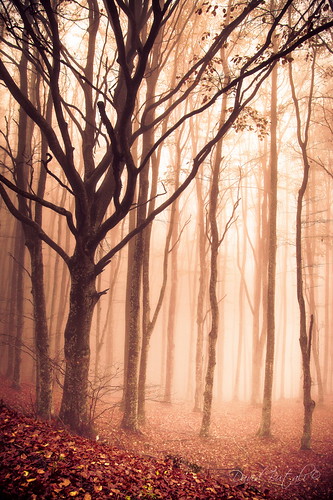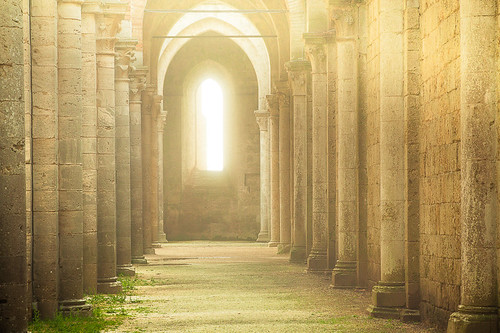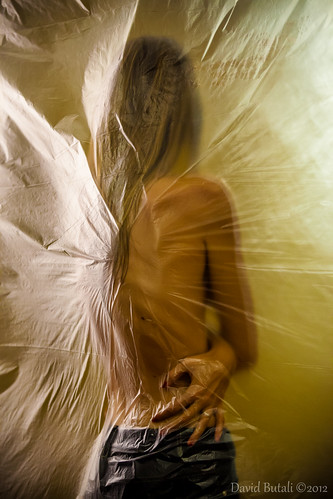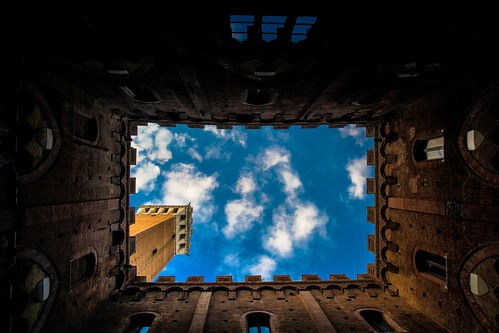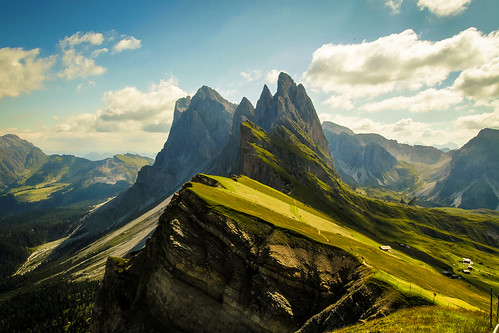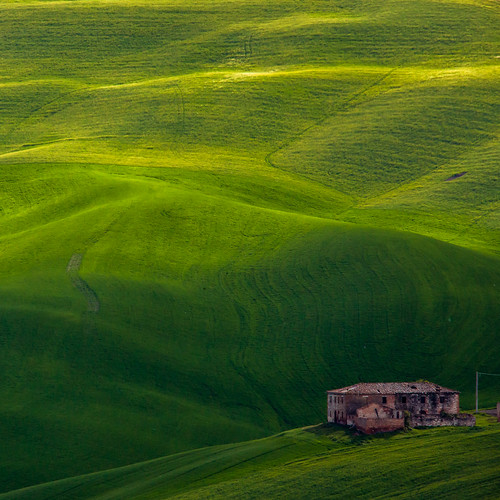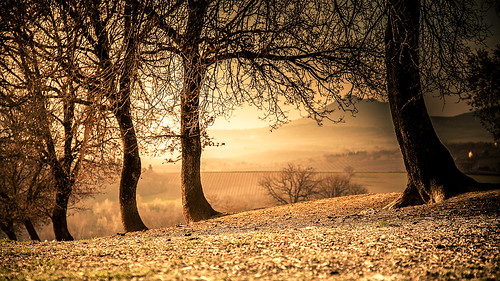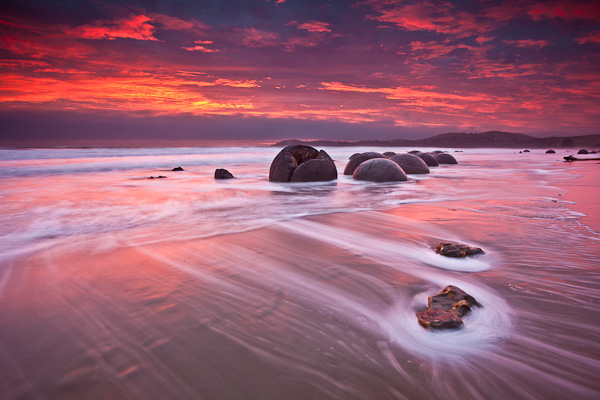venerdì 28 dicembre 2012
giovedì 13 dicembre 2012
Exposing to the Right
Exposing to the right (often refferred to as ETTR) is a technique that seems to polarise opinions across the internet so you can find plenty of examples of people supporting its use and an equal number of people claiming it adds no value. The principles of the technique however do hold value and are valid to consider when out taking images. As it is a technique that I regularly employ when photographing landscapes I wanted to share the reasoning behind it, and show an example of the benefit it can bring.
The term ‘expose to the right’ refers to the histogram associated with an image. Typically, for a shot to be well exposed, we are taught to aim for an even spread of tones across the histogram, peaking in the middle, and tapering off at the edges. When ‘exposing to the right’, the idea is to push the peak of the histogram as far to the right hand side as possible, i.e. overexpose the image, without clipping any highlights. The resulting file, when processed back to the correct exposure, will contain more tonal information and less noise in the shadow areas, maximising your image quality.
Let’s consider the CCD or CMOS sensors found in most digital cameras. Typical DSLR sensors can capture seven stops of dynamic range and produce 12-bit raw image files, capable of recording 4096 tonal levels in each red/green/blue channel. The ability to record such a large number of tones should guarantee smooth transitions between the tones within the resulting image, however it is not quite that simple.
Whilst you might think that each of the seven stops in the range of the sensor record an even number of tones throughout the dynamic range, you would be mistaken. F-stops are logarithmic in nature meaning that each stop records half of the light of the previous one. Practically, this means that the brightest stop records half of the possible number of tones, i.e. 2048, the second stop records half again, i.e. 1024, and so on until the seventh stop that records only 32 tonal levels. Therefore, if you underexpose an image and correct the exposure during in post processing, the tonal transitions in the darker areas will not be as smooth, and the risk of degrading your image quality is much higher. If you overexpose your image, by pushing the histogram to the right, you will capture much more tonal information that results in much better image quality when correcting the exposure in post processing.
Read more...............
lunedì 10 dicembre 2012
martedì 27 novembre 2012
mercoledì 7 novembre 2012
domenica 21 ottobre 2012
sabato 29 settembre 2012
Hotel l'Aretino
Il mio primo video! Ideato, diretto,ripreso e montato interamente da me. Canon 5D mark II a 1920x1080 24 f/s Canon 24-105 f4 Windows Movie Maker Any Video Converter -AnvSoft
martedì 25 settembre 2012
domenica 23 settembre 2012
giovedì 20 settembre 2012
venerdì 7 settembre 2012
domenica 2 settembre 2012
lunedì 27 agosto 2012
giovedì 23 agosto 2012
martedì 21 agosto 2012
venerdì 27 luglio 2012
mercoledì 18 luglio 2012
giovedì 12 luglio 2012
giovedì 14 giugno 2012
"Luce e colore, poesia dell'Infinito" mostra fotografica di David Butali

"Luce e colore, poesia dell'Infinito" mostra fotografica di David Butali, a photo by David Butali on Flickr.
Aula della Cultura, 15 giugno - 19 Agosto 2012
La mostra delle foto di David Butali ha il dono di introdurci nelle atmosfere delicate e sottili dei paesaggi toscani. Le linee, le luci, i colori e i ritmi armoniosi di queste visioni, diventano poesia raffinata senza luogo e senza tempo, che ci trasporta verso mondi lontani, evocando il senso e la bellezza dell'infinito.
La mostra si inaugurerà Venerdì 15 Giugno 2012 all'Aula della Cultura alle ore 18 e rimarrà in esposizione fino al 19 Agosto 2012
venerdì 8 giugno 2012
10 Photographic Assignments to Hone Your Skills
by Darren Rowse
A few months ago I wrote about how setting myself photographic assignments was one of the things that had helped me to improve my photography the most.
The idea was that it is often when you put yourself into a situation specifically for photography that you are forced to practice the theory that you know and you see your photography improve.
The assignments I mentioned were all different types of photography or places to take photos – weddings, road trips, sporting events, festivals, portrait sessions, concerts, trips to the zoo etc.
What I didn’t mention in the post was another set of ‘assignments’ or challenges that I’ve set myself over the years which have also led to a lot of photographic growth.
In these challenges I tend to set myself the challenge to only shoot in one particular way for a period of time (for me it is usually a weekend challenge as that is when i take most of my images).
These challenges all relate to your camera and limiting yourself in some way to either switch off some element of the automated aspects of your camera, limiting yourself to really hone a skill or to practice some kind of technique.
While this isn’t really a natural way to shoot – I find that focusing in on one particular aspect or skill in photography at a time can really help to see improvements in that period of time which means when you next need that skill you’re all ready to go!
Here’s a few suggestions based upon weekends that I’ve done:
>>>>>>>>>>>>>>>>>Read more >>>>>>>>>>>>>>>>>
A few months ago I wrote about how setting myself photographic assignments was one of the things that had helped me to improve my photography the most.
The idea was that it is often when you put yourself into a situation specifically for photography that you are forced to practice the theory that you know and you see your photography improve.
The assignments I mentioned were all different types of photography or places to take photos – weddings, road trips, sporting events, festivals, portrait sessions, concerts, trips to the zoo etc.
What I didn’t mention in the post was another set of ‘assignments’ or challenges that I’ve set myself over the years which have also led to a lot of photographic growth.
In these challenges I tend to set myself the challenge to only shoot in one particular way for a period of time (for me it is usually a weekend challenge as that is when i take most of my images).
These challenges all relate to your camera and limiting yourself in some way to either switch off some element of the automated aspects of your camera, limiting yourself to really hone a skill or to practice some kind of technique.
While this isn’t really a natural way to shoot – I find that focusing in on one particular aspect or skill in photography at a time can really help to see improvements in that period of time which means when you next need that skill you’re all ready to go!
Here’s a few suggestions based upon weekends that I’ve done:
>>>>>>>>>>>>>>>>>Read more >>>>>>>>>>>>>>>>>
giovedì 31 maggio 2012
Composing Dynamic Landscape Images
A Guest Post by Todd Sisson from www.sisson.co.nz.
As a landscape photographer I am constantly seeking that next X-factor shot – an image that leaps from the screen or page and demands the viewer’s attention – preferably attention of the favourable variety.
If you spend an hour or two on a photosharing site like Flickr viewing landscape images in un- curated groups you will note that a very small percentage of the total image population stands out from the crowd.
However, if you view a carefully curated collection of top-shelf landscape images you will probably start to notice some themes appearing. Certain visual cues and devices appear across multiple images – there will often be subtle commonalities between these attention hogging photos.
In many instances these images will possess the qualities of what I consider a dynamic landscape image.
>>>>>>>>>>>>>>Read more>>>>>>>>>>>>>>>>>>>>>>>>>>>>
As a landscape photographer I am constantly seeking that next X-factor shot – an image that leaps from the screen or page and demands the viewer’s attention – preferably attention of the favourable variety.
If you spend an hour or two on a photosharing site like Flickr viewing landscape images in un- curated groups you will note that a very small percentage of the total image population stands out from the crowd.
However, if you view a carefully curated collection of top-shelf landscape images you will probably start to notice some themes appearing. Certain visual cues and devices appear across multiple images – there will often be subtle commonalities between these attention hogging photos.
In many instances these images will possess the qualities of what I consider a dynamic landscape image.
>>>>>>>>>>>>>>Read more>>>>>>>>>>>>>>>>>>>>>>>>>>>>
Iscriviti a:
Post (Atom)




